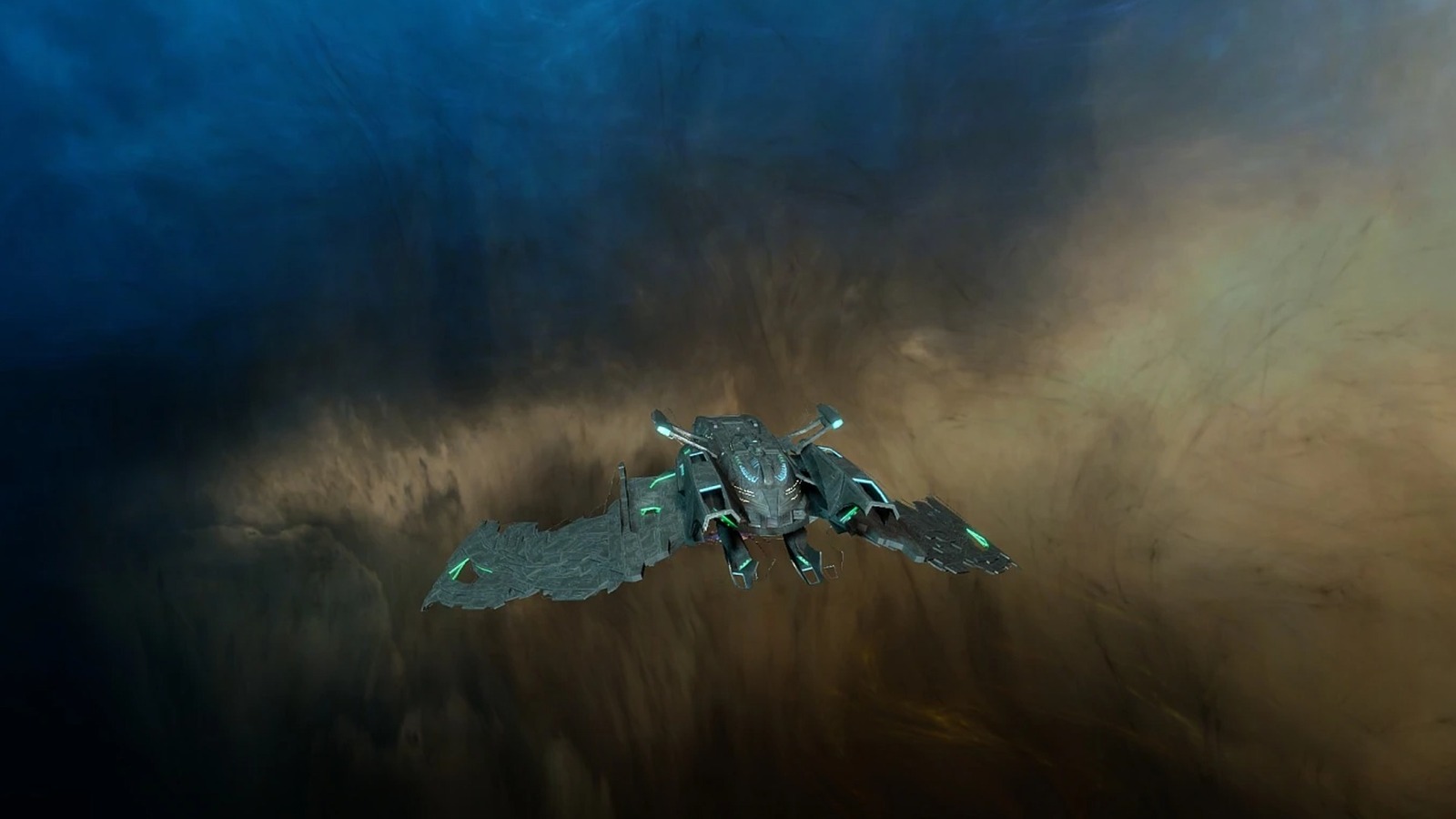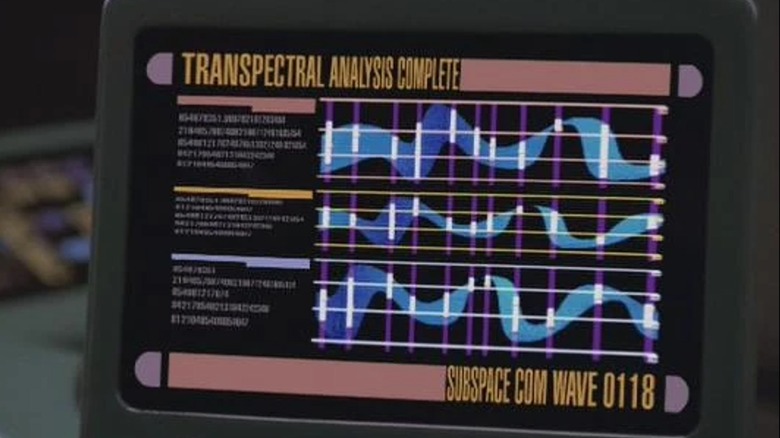
As a devoted “Star Trek” fan, I have always been captivated by the intricate and imaginative concept of subspace. The idea that there exists a realm between realities, a space where communication and faster-than-light travel are possible, has long fascinated me.
In the Star Trek universe, nearly every advanced technology that enables Starfleet’s voyages is reliant on the existence of a single discovery: subspace. This abstract concept, often discussed in bridge and engineering jargon, plays a crucial role in the franchise. Although its workings may not be completely understood, subspace appears to act as a kind of intermediary between realities. Essentially, it allows for the circumvention of spacetime physics and the achievement of faster-than-light (FTL) speeds – beyond what even the fastest Starfleet ships can manage. As stated in the 1967 third revision of the official Writers/Directors Guide for “Star Trek: The Original Series,” we refer to this as subspace, since it is essential that communications from the Enterprise to its bases are transmitted via a ‘space warp’ effect that travels at speeds much greater than even that of the Enterprise itself.
In “The Original Series,” the term “subspace” is frequently mentioned in connection to communications. Uhura often shares updates on subspace frequencies, and there are occasional mentions of subspace static and messages from this dimension among the crew members. The idea of a “subspace marriage” – an unusual 23rd-century concept resembling mail-order brides – significantly impacts the storyline in “Mudd’s Women.” As the Star Trek universe evolved, so did the intricacies of subspace, leading to its development into a richly layered and self-contained realm as portrayed in “Star Trek: The Next Generation” and subsequent series.
Subspace is more than a frequency

In “Star Trek: The Next Generation,” the series depicts subspace as a unique dimension, neither entirely space nor another realm. Geordi La Forge, played by LeVar Burton, explains in the episode “Schisms” that subspace consists of an infinite number of interconnected areas, likening it to a vast honeycomb with countless cells. In the memorable episode “Remember Me,” Beverly Crusher, portrayed by Gates McFadden, becomes trapped in a bubble within subspace. While there, her thoughts have the power to generate a rapidly deteriorating universe.
In the “Star Trek: Voyager” episode “Cold Fire,” Tanis, an Ocampa character played by Gary Graham, shares his belief that thought and reality are connected in a subspace layer. He describes this area of subspace as being composed of pure thought and energy. The Caretaker and other Nacene beings are said to come from this subspace realm. However, they aren’t the only inhabitants of subspace. In the “Star Trek: The Next Generation” episode “Schisms,” members of the Enterprise-D crew are secretly taken and subjected to experiments – some fatal – by extraterrestrial beings residing in subspace, whose physiology is based on solanogen, a substance that can only exist in this dimension.
As an avid Star Trek fan, I’m always fascinated by the intricacies of the universe depicted in the series. One such phenomenon that leaves me in awe are these elusive particles called Tetryons. Hailing from subspace, they’re notoriously hard to detect for even the most advanced ship sensors.
Starfleet runs on subspace technology

Subspace technology plays a crucial role in the Federation’s functions, acting like the essential lubricant for Starfleet’s machinery. Based on information from “Star Trek: The Next Generation Technical Manual,” this technology is vital for Starfleet’s operations, significantly warp drive and interstellar communications. As stated in the “TNG” writer’s guide, communicating through subspace radio waves allows ships to connect instantly when within a few dozen light years of each other. Delayed transmissions can still be received within several days in most instances.
In the early advancements of his warp theory, Zefram Cochrane relied significantly on the concept of subspace. As mentioned in the “TNG” technical manual, Cochrane’s design functions by generating and pushing against successive layers of warp fields. This process compresses energy into subspace, making it easier for the spacecraft to move through the arranged layers of warp field energy (p. 54). The measurement units for evaluating subspace field disruption and pressure are millicochranes and cochranes.
A significant number of a Federation starship’s crucial technologies function through the principles of subspace physics. The navigational deflector system employs subspace field distortion amplifiers and coils, while tractor beams utilize a subspace graviton force amplifier to create spatial stress that attaches to targets. Torpedoes, tricorders, near-warp transportation, sensor arrays, and even Starfleet personnel’s communicators and personal phasers rely on their subspace transceiver assembly (STA) circuits for operation.
Read More
- Grimguard Tactics tier list – Ranking the main classes
- Gold Rate Forecast
- 10 Most Anticipated Anime of 2025
- Silver Rate Forecast
- PUBG Mobile heads back to Riyadh for EWC 2025
- Maiden Academy tier list
- USD CNY PREDICTION
- Castle Duels tier list – Best Legendary and Epic cards
- Box Office: ‘Jurassic World Rebirth’ Stomping to $127M U.S. Bow, North of $250M Million Globally
- The 15 Highest-Grossing Movies Of 2024
2024-07-25 14:59